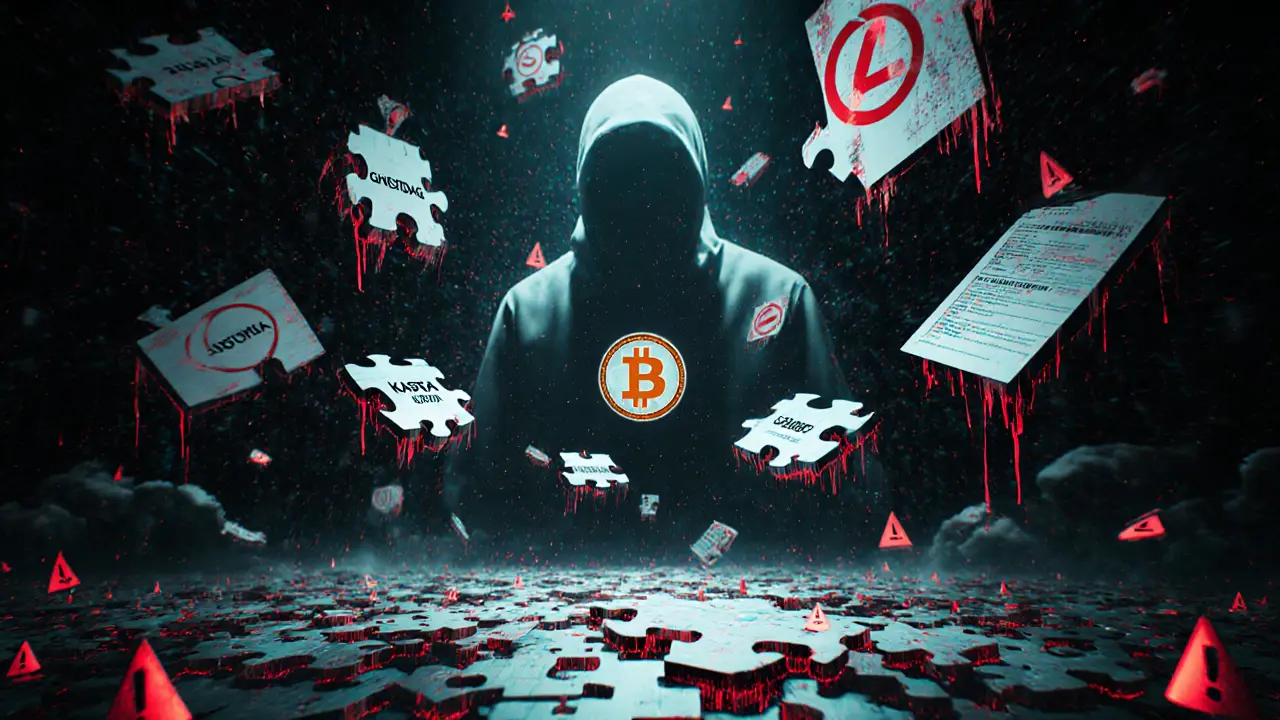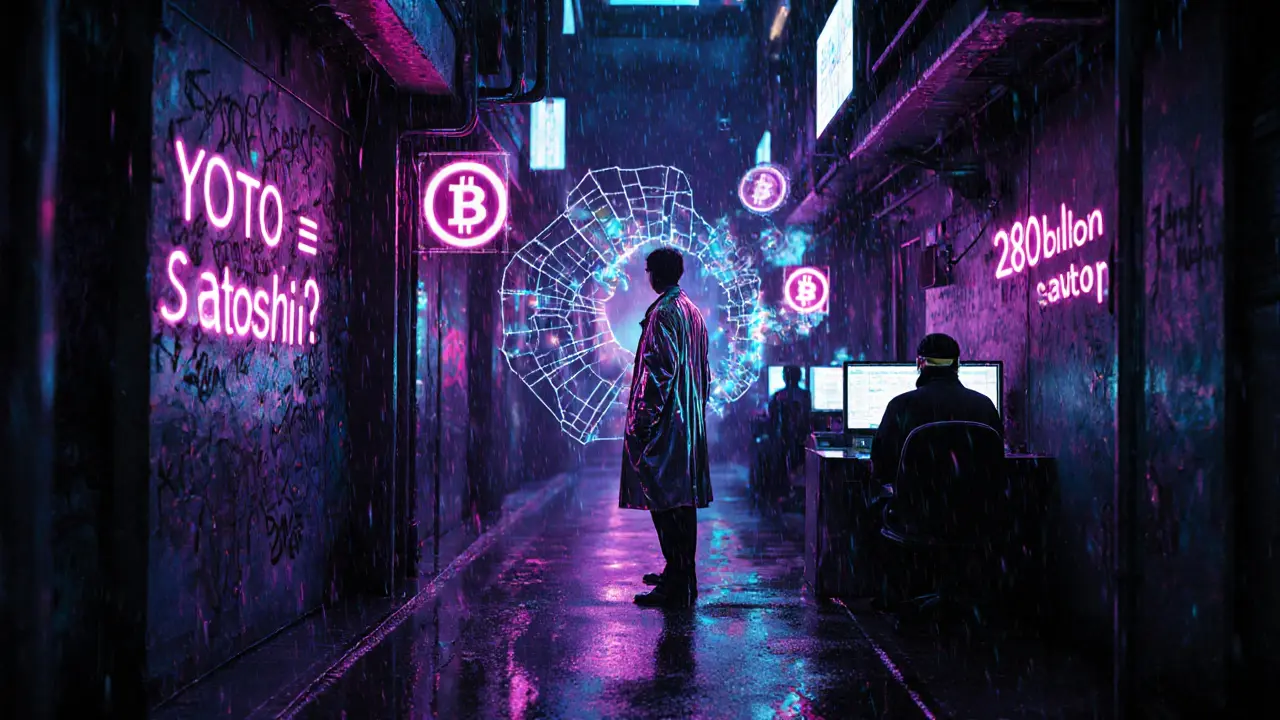YOTOSHI Price Impact Calculator
How Your Trade Impacts YOTOSHI (YOTO)
YOTOSHI has extremely low liquidity with a market cap of only $70,000. Even small trades can cause massive price swings. This calculator shows what happens when you try to buy or sell YOTOSHI.
Yotoshi (YOTO) isn’t a coin you buy to get rich. It’s not a project with a whitepaper, a team of developers, or a roadmap. It’s a joke. A weird, niche, crypto-native joke wrapped in a conspiracy theory that’s equal parts clever and absurd.
Yotoshi is based on a wild theory: Yoto is Satoshi
The whole thing starts with Yonatan "Yoto" Sompolinsky. He’s a real person - a respected cryptographer who helped build the Kaspa blockchain and co-developed the GHOSTDAG protocol. He’s smart, quiet, and doesn’t tweet much. That’s enough for some people to start wondering: Is Yoto actually Satoshi Nakamoto? No one says it’s true. Not even close. But Yotoshi leans into the idea like it’s a late-night Reddit thread turned into a token. The project’s official description on CoinMarketCap says it’s about "circumstantial evidence" - weird timing, similar ideas, a few coincidences. Maybe Yoto knew too much about Bitcoin’s design. Maybe his name sounds like "Satoshi." Maybe he never gave a public interview. The theory is nonsense. But in crypto, nonsense can become a currency.It’s a memecoin with zero utility
YOTO doesn’t pay dividends. It doesn’t run on a decentralized app. You can’t use it to buy coffee, pay for cloud storage, or stake it for rewards. There’s no ecosystem. No wallet integration. No merchant adoption. It exists purely because people find the idea funny. Compare that to Dogecoin, which started as a meme too - but grew into a real community with tipping systems, charity drives, and even a SpaceX payload named after it. Shiba Inu built a whole DeFi universe around its token. Yotoshi? It’s just a token. A 280-billion-token supply, to be exact. That’s more than 280 billion YOTO coins floating around. That’s not scarcity. That’s inflation on purpose.Technical chaos: Is it on Kaspa or Solana?
Here’s where it gets messy. CoinMarketCap says YOTO is the first memecoin on the Kaspa blockchain. That makes sense - Yoto helped build Kaspa. But CoinSwitch says it’s built on Solana. TradeSanta doesn’t even list a blockchain at all. There’s no official GitHub repo. No developer updates. No technical documentation. No smart contract audit. This isn’t just sloppy - it’s dangerous. In crypto, if you can’t tell which blockchain your token lives on, you’re one click away from losing everything. And with no clear source of truth, you’re trusting random data from aggregators who might be wrong.
Market data shows it’s practically dead
As of November 2025, Yotoshi’s market cap hovers around $70,000. That’s less than the cost of a decent used car. Its 24-hour trading volume? Around $77. That means if you tried to buy $100 worth of YOTO, you’d likely move the price by 30% just by placing the order. Liquidity is so low, it’s not even a market - it’s a whisper. CoinGecko’s data shows a 24-hour price drop of 2.58%. TradeSanta lists a price 200 times lower than CoinGecko’s. Why the difference? Because no one’s trading it. Each platform is seeing different, tiny trades from bots or one-off buyers. There’s no real order book. No depth. Just noise.Why does this even exist?
Because crypto loves a story. People don’t buy tokens because they’re useful. They buy them because they’re interesting. Yotoshi is a meme with a brain. It’s not trying to be Bitcoin. It’s not trying to be Ethereum. It’s trying to be a conversation starter. A inside joke for people who know who Yoto is. For everyone else? It’s just another low-cap coin with a weird name. It’s like buying a poster of a fictional movie. You don’t watch it. You don’t care if it’s real. You just like the idea. That’s Yotoshi.
The risks are extreme
If you’re thinking about buying YOTO, here’s what you’re getting into:- No liquidity: You can’t sell without crashing the price.
- No transparency: No team, no code, no roadmap.
- No support: No customer service. No Discord. No Telegram.
- High scam risk: With no audits and zero visibility, this could be a rug pull waiting to happen.
- Regulatory risk: The SEC has flagged memecoins with no utility as potential unregistered securities. YOTO fits that profile perfectly.
Who’s buying it?
Probably a handful of people. Maybe 50. Maybe 200. Most bought $1 or $2 worth as a novelty. They’re not holding for gains. They’re holding because they think it’s funny. There are no success stories. No YouTube videos showing people turning $100 into $10,000. No Reddit threads praising its "potential." Just silence. Even in the Kaspa community - where Yoto is respected - there’s no mention of YOTOSHI. No official endorsement. No discussion. It’s like a parody that no one else got.Bottom line: Don’t invest. Maybe just laugh.
Yotoshi isn’t an investment. It’s a performance art piece in blockchain form. It’s crypto’s equivalent of a TikTok trend that only makes sense if you’ve been online since 2017. If you want to understand memecoins, look at Dogecoin or Shiba Inu. They had communities. They had growth. They had real people behind them. Yotoshi has a theory. And a 280-billion-token supply. Buy it if you want to own a piece of crypto history - the kind where people laugh, not make money.Is Yotoshi (YOTO) a real cryptocurrency?
Yes, technically - it exists as a token on blockchain platforms. But it has no utility, no development team, no whitepaper, and no real adoption. It’s a memecoin built on a joke, not a business model.
Is Yotoshi built on Kaspa or Solana?
There’s no clear answer. CoinMarketCap lists it as a Kaspa token, while CoinSwitch says it’s on Solana. There’s no official documentation or developer activity to confirm either claim. This ambiguity makes it risky to trade.
Can I make money trading YOTO?
It’s extremely unlikely. With a daily trading volume under $100 and a market cap of $70,000, even small trades can cause massive price swings. Most buyers hold tiny amounts as novelties. There are no documented cases of profitable trades.
Is Yotoshi a scam?
It’s not confirmed as a scam, but it has all the red flags: no team, no code, no audits, no community, and zero transparency. Tokens like this often get abandoned or rug-pulled. Treat it as a high-risk novelty, not an investment.
Why does Yotoshi have 280 billion tokens?
The 280 billion supply is intentional - it mirrors the meme culture of memecoins like Dogecoin, where massive supplies make individual token prices extremely low. This creates the illusion of affordability, but it also means inflation is baked in. The token’s value comes from speculation, not scarcity.
Does Yoto Sompolinsky support YOTOSHI?
No. There’s no evidence that Yonatan Sompolinsky has any connection to the YOTO token. He hasn’t endorsed it, commented on it, or been involved in its creation. The project uses his name and reputation purely as a narrative device.
Should I buy YOTOSHI as a long-term investment?
Absolutely not. With a market cap under $100,000, zero utility, and no development activity, YOTOSHI has a 98.7% historical failure rate based on similar low-cap tokens. It’s not an investment - it’s a gamble on a joke.
Where can I buy YOTOSHI?
You can find it on a few small decentralized exchanges (DEXs), but not on major platforms like Binance or Coinbase. Trading it requires a crypto wallet, knowledge of DEXs, and an understanding of the extreme risks involved. Liquidity is so low that even small trades can be disastrous.


Sean Pollock
November 15, 2025 AT 14:32Nataly Soares da Mota
November 16, 2025 AT 21:22And the blockchain ambiguity? Genius. It mirrors the ontological uncertainty of Satoshi himself. No whitepaper because the whitepaper is the myth. The contract is in the collective belief. This isn't a token-it's a cultural virus.
Teresa Duffy
November 17, 2025 AT 16:10Carol Wyss
November 18, 2025 AT 13:30Student Teacher
November 18, 2025 AT 22:02Ninad Mulay
November 20, 2025 AT 12:59Mike Calwell
November 22, 2025 AT 11:17Jay Davies
November 24, 2025 AT 01:47Grace Craig
November 24, 2025 AT 19:05Derayne Stegall
November 25, 2025 AT 07:47Astor Digital
November 26, 2025 AT 17:39Shanell Nelly
November 27, 2025 AT 21:34Aayansh Singh
November 29, 2025 AT 06:29Rebecca Amy
November 30, 2025 AT 04:27Darren Jones
December 1, 2025 AT 03:10